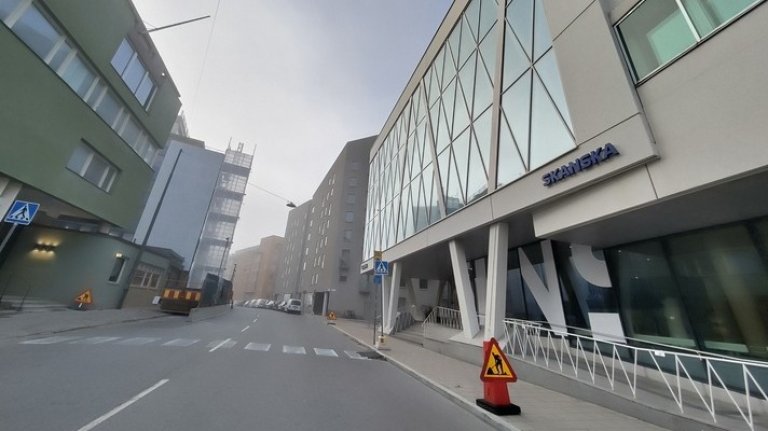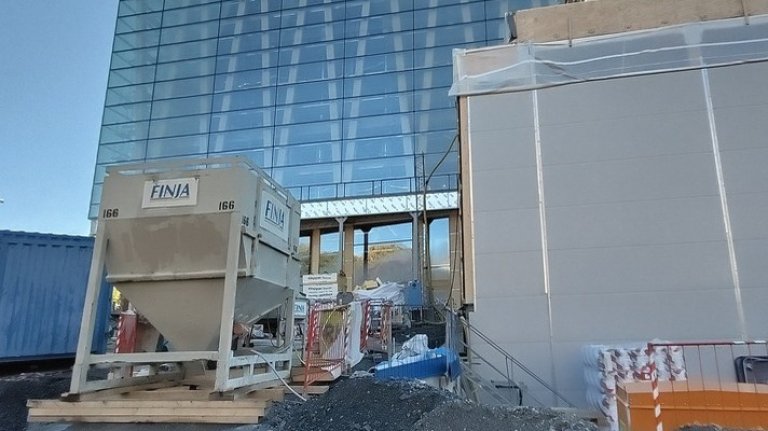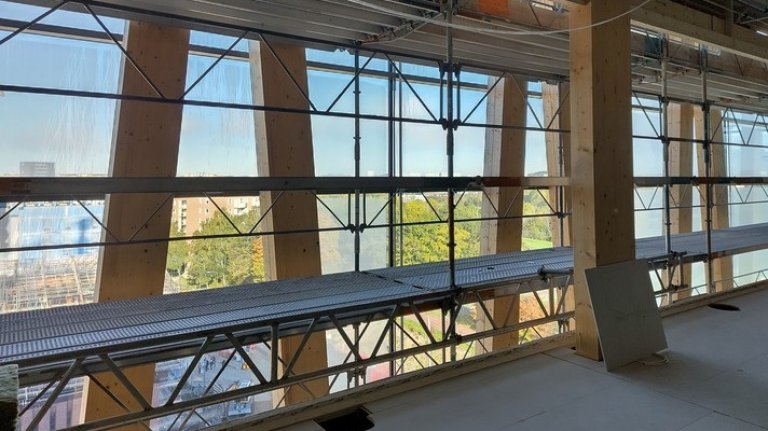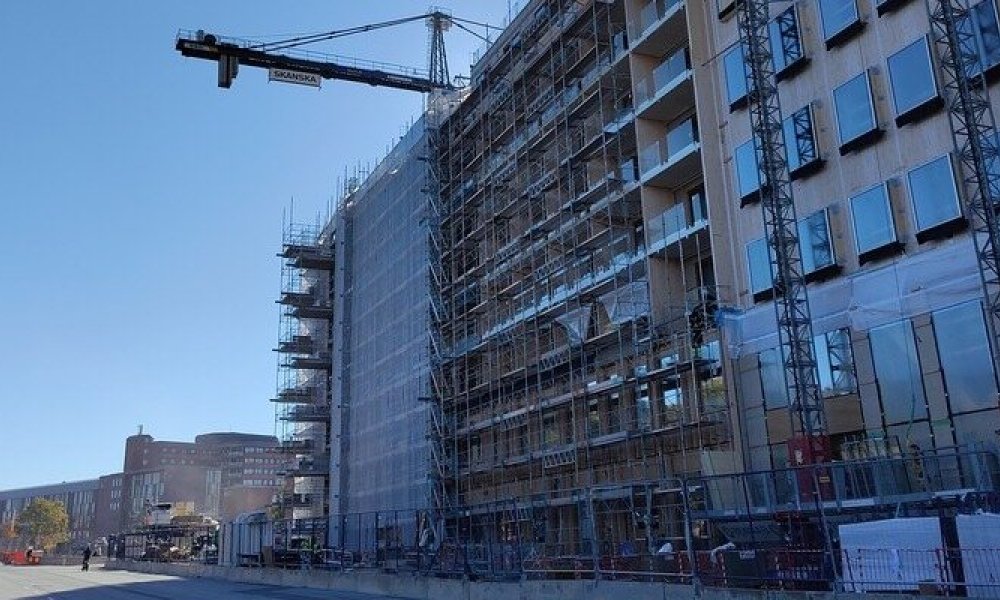After a tip from my colleague Victoria Lidén of team Risk and Ownership, about the possibility of a tour of Skanska’s new site, and the prospect of meeting colleagues and acquaintances to discuss low emission construction on Sweden’s annual “cinnamon bun day”, a train trip to Stockholm was the only right option!
The site of inspection was the construction site of the new head office for Electrolux, located at Kungsholmen in Stockholm. The development project is led by Skanska, which is what we call a solutions company – a company with products or services that help achieve the UN Sustainable Development Goals – under the investment theme “Smart Cities”, sub-theme “Urban Planning” and category “Urban Infrastructure”. It has been a position in Storebrand’s Global Solutions and Smart Cities strategies for more than three years.
From Nordic strength to global growth
Although historically the Swedish construction giant has focused on Nordic and European markets, it now gets 42 percent of its revenues from the USA. With 27 000 employees, Skanska has offices in twelve countries and develops projects worldwide.
Ambitious climate targets within the state of California and regulatory packages for the entire country such as the Infrastructure Investment and Jobs Act (1) have sparked demand for Skanska’s competence. The chance to bring Nordic sustainability expertise abroad has proved to be a very lucrative strategy for winning contracts for large scale project development in the US.
All the right signals
Closer to home, the firm’s climate and social standards were also decisive for securing the contract that Skanska was awarded by Electrolux, which was eager to build a high-quality, symbolically representative sustainability headquarters at the site at Franzéngatan 6 in Stockholm. The Electrolux headquarters is featured as a “signal” project for low-emission construction.
As a Norwegian, I found it reassuring that the massive wood elements were supplied by the Brummundal-based Norwegian manufacturer Moelven, which is recognized worldwide for its high-quality production methods. Moelven is not listed on the public markets, but it’s on team Solutions’ list of promising private companies that would be interesting if listing were to be floated in the future.

Observing a rack of insulation on the outdoors tour, the supplier turned out to be another solution company, Kingspan, which is also a position in the funds. I usually interpret cross-interaction between solution companies as an excellent sign, due to the acknowledgement of high-quality standards both ways.
As I have learnt from my colleague Tiril Flørnes Støle on team Norwegian Equities, a tidy construction site is usually a good sign. In essence, a tidy construction sites signals discipline, logistics, coordination, worker skills and consequently a high likelihood of safety in the form of lower injury risks. Skanska passed the test! I also learnt that the biggest risk we as visitors were exposed to was “snubbelrisk”, or the risk of tripping. In other words, Skanska’s HMS procedures were flawless. We even got to know where the heart-starter was.


Massive sustainability-oriented project
The new Electrolux headquarters building is only one part of a broader construction project that spans a total area of nine thousand square meters. In addition to the Electrolux headquarters, the project will have space for residential buildings, sports facilities and a school.
The project focused on environmental aspects, for example through the choice of materials such as massive wood and recycled bricks from the now-demolished headquarters building that was previously located at the same site. The architectural assets of the new main façade were a mix of old and new materials, which in and of itself was aesthetically and conceptually exciting. An extensive green roof with integrated solar panels will both produce renewable energy and soak up rainwater to prevent flooding in the local area in periods with high precipitation levels.
Skanska developed the project to deliver the highest level of environmental certification, measured by the BREEAM standard. Furthermore, it achieved a new environmental certification from the Swedish Green Buildings Council called “ZeroCO2” which is awarded to climate-neutral construction projects. When Electrolux moves in by February 2025, the building will come to life. As Skanska aptly emphasized in the meeting: people need places that enable social interaction. Environmental aspects must be taken into account, but social factors are just as important for shaping safe city spaces that foster connection, rich conversations, creativity and value creation.
Sources
(1) The White House (2021), Fact Sheet: The Bipartisan Infrastructure Deal




